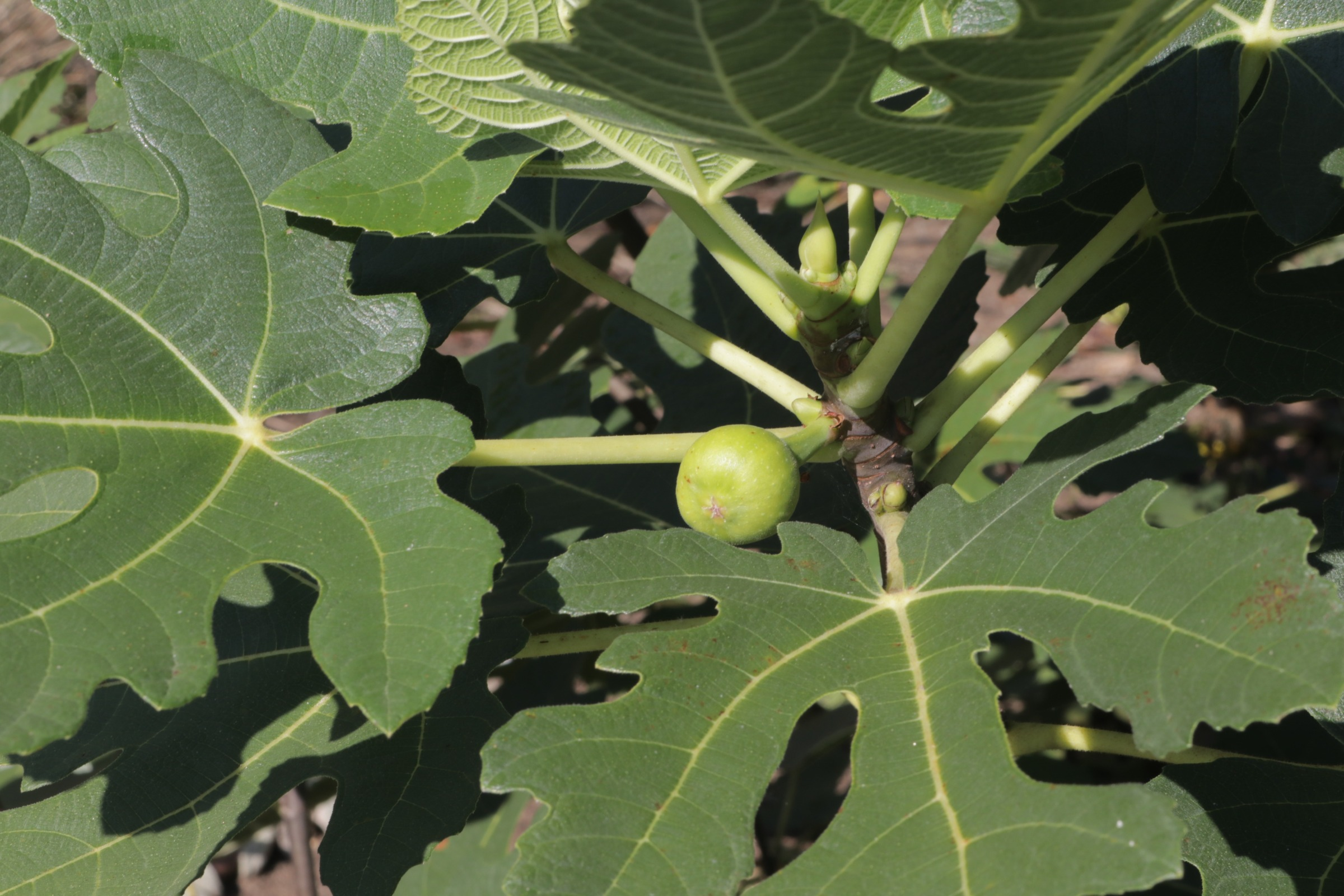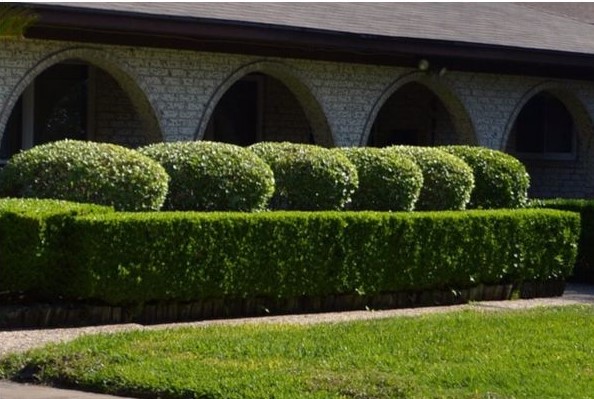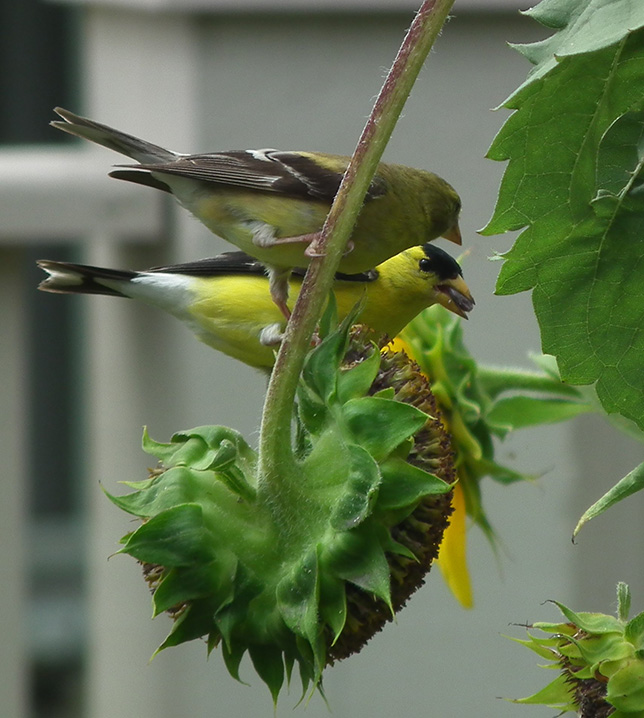Do you like figs? A simple enough question, but if like many of us your only previous "fig experience" is a dried fruit cookie, you may not really know. A true fig aficionado would likely assert that if you've never eaten a fresh, ripe fig, you've never eaten a fig. Although figs are not my favorite fruit, I would still have to agree--a fresh fig is an entirely different animal.....uh, fruit. Much like tomatoes, it's hard to get a properly ripened fig, as they are often picked to improve shelf life and handling before they reach that perfect stage. Unlike tomatoes, however, they do not continue to ripen once harvested. And all figs are not the same. Depending on the variety, they can have flavor overtones of honey, buttery caramel, lemon, or even chocolate, and be sweet, bright and fruity or earthy and nutty. One fig grower likens their varied flavor profiles to wines such as Cabernet, Pinot Noir, or Reisling.

Growing Figs in the Home Garden
Fig Facts:
Figs are one of the oldest fruits in cultivation, dating back as early as 4900 years ago. Native to the Mediterranean, they were first brought to North America by Spanish and Portuguese missionaries in the 16th century. Hence, when they reached California 200 years later, one variety was dubbed “Mission” fig.
Figs are moderately salt-tolerant but not particularly cold-tolerant, so are more often found in gardens in coastal areas around the Gulf and Mid-Atlantic states. Best grown in-ground in zones (7)8-10, figs are nontheless planted by fig lovers in northerly climes who either carefully protect in-ground specimens during cold winters, or containerize their figs and overwinter them dormant in any available warm enough space.

Fig Growing Basics
Besides the climactic considerations, all figs really need to grow is a good, well-drained soil and full sun, preferably 8 hours or more to heat and ripen fruit. Once fruit forms, they will need 70 to 90 days to ripen, depending on variety and climate. They are fast-growing, suckering from the roots, and may eventually form thickets 10-20 feet wide and as high or higher. Their root system is shallow but extensive, up to 3 times the diameter of the canopy. Fortunately, the roots are not damaging to masonry foundations or underground steel pipe. They may however, harm clay sewer pipe, so figs should not be planted closer to them than 25 feet, or over septic drain beds. Interestingly, wild figs can be found on rocky outcroppings and in very dry locations where their roots extend deep below the surface to reach any available water. Irrigated plants will produce more surface roots, but yield is vastly improved.
Figs respond well to additions of fully rotted manure or compost, and established in-ground bushes rarely require commercial fertilizers. If your fig is growing at least a foot per year, fertilizing should not be necessary. Over-fertilization is more likely to result in rank growth and poor fruiting--more than 3 inch spacing between leaves is a sign of over-vigorous growth and fertilizing should be reduced. Younger plants may benefit from 3 applications of a well-balanced fertilizer (6-6-6 or 8-8-8) during the season, but refrain from feeding after mid-summer so that the plant may harden off before frost. Soil ph of 5 to 8 is acceptable, 6 to 6.5 is ideal.
While established fig plantings are relatively drought tolerant, some varieties, such as Celeste, will form dry, hard fruit or drop fruit altogether in dry summers. An average of 1 to 1 1/2 inches of rain per week is generally needed. Wilting grass is a sure sign that figs planted in lawn areas need water. Careful attention must be paid when fruit is ripening—uneven or too much water may cause splitting and cracking.
Planting Figs in the Home Garden:
Some growers report that figs fruit better with some type of root restriction. Figs are therefore sometimes planted in a large pit with the sides lined with rocks or boards.
Pruning In-Ground Figs:
Winter Protection for In-Ground Figs in Cooler Zones:
- In zones where 15 degrees in winter is common, you will want to consider winter protection. Plants may be tied up and dug on one side, bent over, and then buried in a trench on the other side and covered with soil. Or plants may be tied up and surrounded with a wire frame, then filled with leaves or straw and covered with burlap. Plastic covering is generally not recommended as it may heat up too much if unseasonable warm spells occur.
Growing Figs in Containers:
Grow figs in containers in zones 6 northward. 15 gallon containers are recommended. Use a good quality container or potting (soilless) mix, and add perlite for drainage. Incorporate a slow-release fertilizer such as Osmocote at planting, or feed with 1/4 teaspoon per gallon of 20-20-20 water-soluble fertilizer at every watering spring through mid-summer. Keep plant moist but not wet. Prune annually in early spring to keep to 5 to 10 feet. Once plant is dormant in fall, place in a dark area that stays above 20 degrees—an attached garage or basement is ideal. Do not let entirely dry out—water every month or so if soil does not feel damp. Bring outside in spring after last frost. If tree has broken dormancy and leaves have sprouted, place in shade first and then gradually into sun to avoid sunburn. Watch the weather—plants will need to be covered or possibly brought back inside in the event of unexpected late frosts.
Pruning Your Container-Grown Fig :
Container-grown figs should be removed and root-pruned every 5 years or so. This sounds scary, but just take a knife and slice off roots on all sides and bottom—a total of 1/3 of rootball. Also do your annual top-pruning at this time, removing 1/3 to 1/2 of the top growth. Then simply replant with fresh soil in the same pot. During the growing season, pots may be sunk in the ground and the roots allowed to grow through the holes to allow them to access water and nutrients. This will lessen maintenance during the season, but remember the pots will need to be dug out to move inside in fall.
Fig Pollination:
Certain figs have fascinating and complex pollination and fruiting habits, involving a specific wasp which lays eggs inside the “fruit,” which is really just a receptacle (synconium) for the actual fruits that hold the seeds inside the fig. Next time you're feeling sorry for yourself, consider the male fig wasp, who completes his entire life cycle inside his fig. Don't worry, though, enzymes in the fig have dissolved the wasps by the time you eat it. And don't look for those fig flowers, either—they are inside the synconium, as well. FYI, almost all commerically grown figs are self-pollinating varieties, so no wasps involved.
Harvesting Figs :
Growing a fig plant is relatively simple; harvesting fruit seems to be problematic for some. Figs grown from cuttings will fruit the first year, but this should be removed to strengthen the plant. Figs in the juvenile stage, approximately the first 3 or 4 years, will not be as productive as mature plants. This does explain why those growing in upper zones have the most complaints—a harsh winter every 4 or 5 years never gives the plant a chance to properly mature. Erratic weather patterns and late frosts also get figs off to a slow start, so some may not have the proper time to ripen their fruit.
Figs must be allowed to ripen on the plant, for they will not ripen after picking. Ripe figs will yield to gentle pressure, and the neck will bend, rather than sticking straight out. They are easily removed from the tree—if milky sap forms on the stalk then the fig is not quite ripe, but may still taste ok. (Note that the sap of figs is a skin irritant to many people.) Soured figs and figs larger than pea size remaining on the bush which have not ripened by the end of October should be removed. Harvested figs will last up to 3 days if refrigerated.
Common Fig Varieties for the Home Garden :
Fortunately for the home grower, you just need to look for varieties of the “common” fig which require no pollination, and which are the likely varieties you will find in your local nursery.
The most cold hardy figs are Chicago Hardy, Brown Turkey, and Celeste, all brownish in color when ripe, with pink flesh. Chicago Hardy is reported to be a heavy producer. Brown Turkey can produce 2 crops of medium to large figs in southern locations, but a breba crop would not be expected above zone 8. It can, however, regrow and produce fruit the same year if winter killed. Celeste is hardier than Brown Turkey and its one crop ripens earlier than others. However, it cannot tolerate prolonged dry periods, and is known for dropping its fruit from a lack of water prior to ripening.
Petite Negri is a dwarf fig that should produce well in a container, with one crop per year. Conadria bears 2 crops of medium to large yellow green fruits with a rich flavor, and is well-suited to California and the southeast, recovering well from freezes. Kadota, or Honey Fig, can be grown the southwest and drier areas of the south. Bears two crops of yellow green fruit with amber flesh and a rich honey flavor. Blanche (syn. Marseilles, Italian Honey Fig, Lemon Fig) bears medium to large yellow-green fruit with many seeds, and a sweet, delicate, nutty flavor. It is suited for growing in the south.
The latest introduction, Phignomenal, has been the subject of intense marketing. Discovered at Peace Tree Growers in Pennsylvania as a branch mutation of Chicago Hardy in 2010, it was patented in 2024. It is said to have a very compact, semi-upright mounded habit, and to be capable of producting prolific quantities of fruit over a very long period. The slow rate of growth should make it a good container specimen - 3 year old plants grown in 3 gallon containers achieved a size of about 30 inches.
One note about "dwarf" varieties: I read frequent complaints from gardeners that their dwarf plants are 4 feet, or 10 feet, or whatever size is larger than they wanted them to grow. A "dwarf" variety does NOT denote a plant that will never grow over 2 to 3 feet tall. "Dwarf" means that it grows smaller and more slowly than the non-dwarf variety. If the non-dwarf variety grows to 70 feet, than a dwarf variety of the same species may grow to only 20 feet--substantially smaller, but hardly likely considered "dwarf" to the uninitiated. In addition, heights listed by growers for mature plants are typically the size of the plant at 10 years. Needless to say, plants do not stop growing once they reach 10 years of age. If you have a dwarf plant in your garden for 20 years, it is very likely to be larger than what you anticipated.
Another confounding factor is that cultivar names can be hopelessly confused, as is the case with figs. Brown Turkey may be English Brown Turkey, Texas Brown Turkey, Everbearing, or Texas Everbearing, depending on the grower and what part of the country you are in. Beware of California Brown Turkey ( also called San Piero, San Pedro, Black Spanish, Thompson's Improved Brown Turkey), which is a different plant and not nearly as hardy. When in doubt, consult your local cooperative extension agency, or Fig Varieties: A Monograph, by Ira J. Condit.










